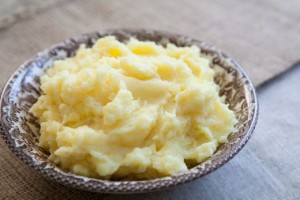 If the food is thicker, it passes the mouth (the oral cavity) and holds together into a “cohesive bolus”. That is, it doesn’t break apart so that individual pieces can travel hither and dither down the throat into the airway and then into the lungs. Folks, this can be dangerous! Because food products that lie in the airway introduce bad bugs that can cause pneumonia.
If the food is thicker, it passes the mouth (the oral cavity) and holds together into a “cohesive bolus”. That is, it doesn’t break apart so that individual pieces can travel hither and dither down the throat into the airway and then into the lungs. Folks, this can be dangerous! Because food products that lie in the airway introduce bad bugs that can cause pneumonia.
So here’s one of the most important principles that the recipes in this blog will incorporate: there should be nothing eaten that has bits or particles that can break away from the mass of the bolus and drop into the airway. To meet that goal, the food will need to be thoroughly blended or strained. That is, the texture of the food is modified. Although, of course, there are many wonderful foods that are already thick enough and this blog has some yummy recipes for things like smoothies and ice cream and polenta and mashed potatoes, thick soup,and macaroni and cheese, and so forth. 
So its no food that breaks apart: no popcorn for sure.No food that has two or more textures, vegetable soup, for example, that has a broth and pieces of vegetables. Does that mean no vegetable soup! No, no. It means that the batch of vegetable soup is run through a food processor, a blender, or attacked with an immersion blender until all the particles are gone, and there’s a smooth mass of soup. Now, that soup may still not be thick enough, so we’ll add perhaps a grated potato, or corn starch or potato starch that will be mixed into the soup to thicken it until there’s a thicker consistency that holds together when swallowed.
Soups are great and there’ll be a lot of soup recipes on this blog. We’ll try to make the soup as healthy as possible, with extra protein and other “good for you” ingredients. It can be hot soup, or cold soup. But it will be delicious. 
But..what if you can’t cook? Don’t know the first thing about it. Well, you’ll just have to learn to do a few things, but it is possible to find plenty of nutritious foods in the supermarket or the local deli all ready to eat or if not completely ready, merely needing a few adjustments.
Individuals without dysphagia have a protective cough. Food passing into the airway will cause a coughing fit. Think of what happens with popcorn when you’re at a movie and gobbling up those delicious kernels. All of a sudden, there’s an onset of a terrific cough. You feel something stuck–you can point to the outside of your neck and locate the place where it feels like something’s stuck. You cough and you cough and out pops whatever it was that triggered the cough in the first place, usually in the case of popcorn, its a little bit of skin from the kernel–a tiny bit–but it’s enough to cause a coughing fit and it’s enough for someone who has a problem to potentially have even a bigger problem
Thickened foods are safer, as a rule, for people with dysphagia. So the recipes on this blog specify ways to thicken. Naturally. That is, without commercial thickeners, products that are sold specifically to thicken foods or products that are themselves already thickened by these thickener.
These products are disliked by almost everyone who has had to use them on a regular basis. And whatever the manufacturers of such thickeners claim, the artificial thickeners make the food taste different, usually with an aftertaste that is unpleasant. The foods taste funny and they have a different mouth feel. In my classes that I teach on dysphagia, students who try the commercial thickeners find them barely tolerable and numerous research studies confirm this.
What I hope to show here is that there is a wide variety of delicious foods that can be prepared with “ordinary” kitchen products that are safe to swallow for most people with dysphagia. And, as an extra bonus, these are often foods that are called comfort foods and are loved by one and all. Of course, comfort food varies by culture and this blog hopes to include recipes from a variety of cultures.
But..what if you can’t cook? Don’t know the first thing about it? Well, it is possible to find plenty of nutritious foods in the supermarket or the local deli all ready to eat, or if not completely ready, only needing a few additions to make it good and safe to swallow.







